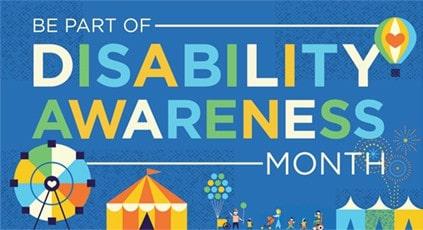Disability Awareness Month has been celebrated for over 10 years at Sonoma State University by students, Disability Advisors, and those that live with disabilities every day. The remaining on-campus events will take place from April 16 through April 25, all held in the Student Center, The HUB, and even at the climbing wall.
Neurodiversity is just one of the many ideas that is explored regarding the identity of those living with a disability. “Students are always the best source of how they learn,” Senior Disability Management Advisor Christy Giambastiani expressed last week to a packed classroom interested in Neurodiversity.
Neurodiversity is just one concept that regards individuals with differences in brain function and behavioral traits. “Neurodiversity is really looking at not so much to cure it but to really express who they are as an identity and as a population,” Giambastiani said.
Neurodiversity is a social identity and shows who everyone is as a population. The concept branched out from the ideas of Autism Spectrum Disorder, or ASD, but it has expanded to a representation of different abilities rather than disabilities in a larger population. Insights from college faculty on Neurodiversity include social groups, critical thinking, and structure.
“Since the Neurodiversity movement was created with the idea of autism specifically there are some organizations that support research and different things related to autism and their goal is to cure autism and the response from individuals is we do not want to be cured because this our identity, it’s who we are,” Giambastiani said.
Learning is a universal platform that is available to everyone. The Universal Design for Learning has been adapted by Disabilities Services for Students. Digital materials are great resources many professors use inside the classroom. One of the types of Universal Design for Learning is the representative example.
“With the representation piece making sure that if you are doing a video you want to make sure that it is captioned in case someone has a hearing impairment then they are not excluded from being able to access that material,” Giambastiani said.
Captioning is also a very important part of digital media use in the classroom. All media that is produced by the IT department is captioned by members of DSS. “We caption the events that happen on campus and the class lectures, and then we upload them to Youtube,” said Accessibility Specialist Stephanie Graham.
The accessible media center is responsible for making an inclusive classroom environment for students with disabilities. “It’s not just for somebody with a disability, and I would love to break the stigma of the idea that someone has to have a disability to use these services,” said Graham.
Captioning can be useful for students who are learning English as a second language as well. This service comes from the Accessible Media Center and is available to all students. Faculty members are constantly calling the center and asking for help on adding the captions to their digital media.
Students are also able to email the accessible media center and ask for assistance. Audio descriptions are also a part of the captioning process and can be very useful for those who have been diagnosed with blindness. Audio descriptions describe the picture currently appearing on the screen.
“Seawolf living make a ton of videos and they broadcast onto Lobo vision and, because of the area, you really can’t hear a lot of the audio, so they automatically caption anything that goes on Lobo vision,” said Graham.
Disability Awareness Month continues throughout all of April with events occurring daily on campus in order for students to gain insight on the topics of their interest.
Disability services for students continue to make accommodations for all their students in order to provide the most useful learning experience.





![[Both photos courtesy of sonoma.edu]
Ming-Ting Mike Lee stepped in as the new SSU president following Sakakis resignation in July 2022](https://sonomastatestar.com/wp-content/uploads/2024/04/CC4520AB-22A7-41B2-9F6F-2A2D5F76A28C-1200x1200.jpeg)


























